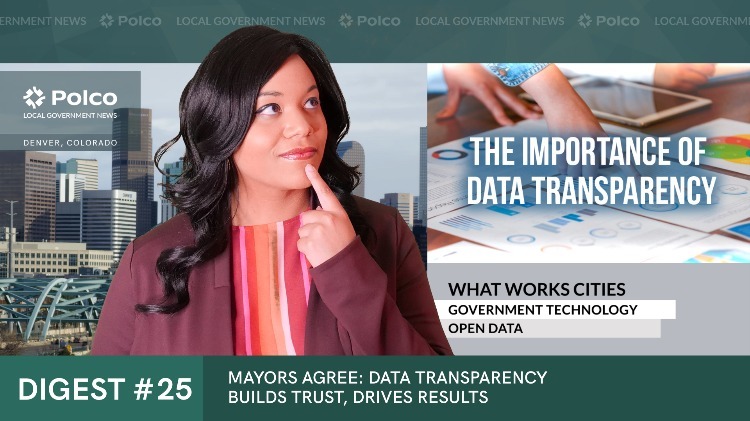Introducing AI Data Analytics for Government Performance Management and Decision-Making
By Polco on April 10, 2024

Polco reveals the first and only AI data analyst for the public sector.
Polco’s new AI marks a new era of data-driven governance by making large-scale data analytics more accessible to all governments for the first time in history.
Due to resource challenges, many organizations are forced to make decisions without quality data, which can have long-lasting effects on communities.
To overcome this challenge, Polco merged extensive resident feedback and government performance databases into an AI system. This technology identifies patterns, establishes connections, presents trends, and generates comprehensive reports within seconds, empowering governments to make informed choices for the betterment of their communities.
The AI, Polly, is the first and only AI data analyst assistant designed specifically for the public sector.

In this webinar, Polco CEO Nick Mastronardi, Co-founder and Chief Strategy Officer Alex Pedersen, VP of Data Science Tobin McKearin, and Principal Research Strategist Michelle Kobayashi explain the brains behind Polly.
 "Our goal is to fundamentally advance how the public sector operates," Pedersen said. "We can do that by leveraging all the powers of hyper and accurate resident engagement, software data, and now, increasingly, AI to usher in a renaissance of data-driven governance."
"Our goal is to fundamentally advance how the public sector operates," Pedersen said. "We can do that by leveraging all the powers of hyper and accurate resident engagement, software data, and now, increasingly, AI to usher in a renaissance of data-driven governance."
Pedersen also demonstrates how Polly works. See how you can use Polly to easily access your community's performance data, compare your data to peer communities and the national average, and get ideas on where to focus your strategic plans within seconds. You will also see Polly draft a housing plan instantly.
So, how is this done exactly?
Polly is trained on trustworthy, accurate data, which set her apart as a highly dependable AI compared to other systems used today such as Open AI.
 "You have these great language models, but they themselves are not powerful mathematicians," Mastronardi said. "You need the data."
"You have these great language models, but they themselves are not powerful mathematicians," Mastronardi said. "You need the data."
Much of Polly's data comes from the Government Performance Action & Learning (GPAL) database. GPAL consists of freely available public data from places like the US Census, the FBI, the Bureau of Labor Statistics, and many others. But what makes GPAL so unique is that it aggregates information from all these sources into one place. Plus, the data points are hand-picked by experts. The people behind GPAL are maestros in measuring community livability. They know what data points actually matter and are good indicators of success because they have been doing community livability and government performance work for decades.
GPAL partners include data scientists from Polco’s National Research Center, experts from the High Road Strategy Center at The University of Madison-Wisconsin, Stanford's Hoover Institution, Harvard, and other specialists.
Polly is also fed information from The National Community Survey (The NCS) database. This data comes from 30 years of public opinion research on community livability, service delivery, trust in government, and all the other components that determine residents' quality of life.
Kobayashi says resident sentiment data is the crown jewel of performance measurement. The NCS database adds humanity to the AI. Incorporating stakeholder voices facilitates trust, supports equity and inclusion, builds social capital, and improves the quality of government decisions.
And Polly is evolving fast. She will soon give prescriptive suggestions based on her complex analyses. She will be able to offer suggestions on how governments can improve their communities in the most effective ways, considering more data than ever before.
"It's exciting to continue to take these next steps, which are right upon our doorstep," Mastronardi said.
Stay Up-to-Date on Polco's Polly Release and other AI Resources
Sign up for alerts on Polco's AI data analyst release dates. Get early access to educational articles, webinars, guides and essential resource on public-sector AI.
Related Articles
Popular posts
Sign-up for Updates
You May Also Like
These Related Stories

What Makes a Community Livable? The Data Behind the Question

Take Your Career to the Next Level With Data-Driven Decision-Making Certification


